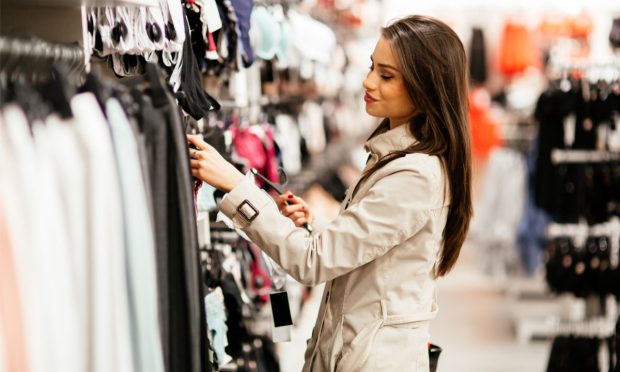Mastercard’s March Retail Sales Data Show War, Inflation Slowed Consumers Less Than Feared

After two years of veering between apocalyptic events punctuated by moments of optimism, it appears that a real recovery is now underway, although high hurdles remain.
Confirming the trend, Mastercard SpendingPulse data for March 2022 found that retail spending leapt 8.4% year over year and 18% compared with the same period in 2019, excluding auto sales and not adjusted for inflation.
While saying that factoring for gas prices and inflation growth is relatively flat, former Saks Fifth Avenue CEO Steve Sadove, now a senior adviser at Mastercard, told PYMNTS that the new data nevertheless shows that “the consumer is holding up despite the fact that they don’t have the stimulus check fueling them anymore.”
Noting the “gives and takes” still unsettled in the 2022 economic recovery equation, Sadove said, “Stores and experiential are reopening, [people are going] back to the office, and people are starting to have to buy clothes again.” He added that as people return to in-person shopping and dining experiences, “This is probably the slowest growth you’ve seen in eCommerce in a couple of years.”
Nodding to the stellar numbers eCommerce did throughout the pandemic, going from 12% of commerce to 18% of commerce virtually overnight and “holding at that level, it’s not continuing that meteoric rise that you saw over the last couple of years.”
“Meteoric” may better describe economic forces like pent-up travel demand being set loose now and reflected in SpendingPulse data, which found that airline spending shot up 44.8% in March, with restaurants doing 19.1% better and lodging up 46.4%.
Even trouble spots in the data can be deceiving.
“If I look at the lower end, between not having stimulus checks and the disproportionate impact of gas prices and inflation, that consumer is going to move towards some of the more value plays,” Sadove said. “But the underlying momentum is continuing to hold up in a rocky environment.”
See also: Mastercard: Service Spending Making a Comeback
Ready to Lose the Sweatpants
What PYMNTS dubbed “pandenomics” — a portmanteau of pandemic and economics — is clearly at work, as both forces tug at consumer intent and buying power in a turnaround year.
Sadove enumerated several ways that pandenomics is both uplifting and disrupting spending activity as the second quarter gets underway, saying categories like domestic travel and dining are benefiting now, while other areas like international tourism are still depressed for the moment.
In retail sales, the gloves — or should we say the sweatpants — are coming off.
“You’ve got people wanting newness in fashion,” he said. “All they were wearing was sweat clothes. Now you’ve got enormous amounts of change going on in apparel, partly because people either changed sizes or [because] a whole different fashion cycle is playing out.”
Traveling and dressing up again may slow spending in some other areas, like home goods. Sadove noted that as people aren’t sitting at home as much, they’re gravitating toward spending on things they couldn’t do during lockdown.
That’s more of a downstream outlook, as the latest SpendingPulse data found luxury sales were up 27.1%, apparel was 16% higher and department store receipts were growing 14.0% year over year.
Remarking on the fact that Carnival Cruise Line had its heaviest booking week ever in late March, Sadove is encouraged — but still concerned — about extending the current rally.
“I was out in LA a week ago, and you’re dealing with $7 gas prices and your food inflation is quite substantial,” Sadove said. “There’s going to be a limit. Even though people are getting decent wage increases, the demand on that consumer is going to be pretty substantial.”
Read more: Online Grocery Prices in US Jump 7.6% in February Excluding Delivery
Confidence Mixed With Caution
After retail sales drop-offs seen in January and February — not unexpected after the holiday selling season in any year, but more critical in this climate — Sadove called the 8.4% figure very healthy and indicative of a consumer that’s come through the worst intact.
While he was anticipating a shift towards services to come at the cost of merchandise, he said, “It’s not been this either-or, it’s been a little bit of an ‘either-and,’ where they’ve been doing both.”
That can be attributed to the higher savings rate seen during the pandemic and the paying down of credit card debt.
“You did have a lot of money in people’s pockets,” Sadove said. “That’s going to come under pressure as we go forward, but so far it’s been a very healthy environment.”
Among uncertainties still weighing on the rebound, rising interest rates loom largest. That’s going to compound inflationary pressures in the short-term, with unpredictable results.
With SpendingPulse data finding luxury goods purchases up an impressive 27%, the former Saks Fifth Avenue CEO commented on eCommerce luxury fashion site Farfetch investing $200 million into Neiman Marcus Group, a year after Saks.com was spun off into a separate business.
“These are both bets on building on and using outside investment dollars to be able to help build the businesses,” Sadove said. “It’s a belief in the luxury sector. The Mastercard numbers reinforce the strength of the luxury sector.”
His optimism extends to consumers, who he said have weathered the pandemic well. However, factors like a volatile stock market and broader global instability are still big wild cards, and that’s being reflected in retailers’ sales and inventory projections.
“It leads you to [feeling] really good about the environment [and] the numbers that we’re seeing,” he said. “But I become cautious as you look forward relative to whether or not you’re going to see the same kind of momentum.”
Related: Farfetch to Pump Money and Punch Into Neiman Marcus and Bergdorf eCommerce Ops
